-
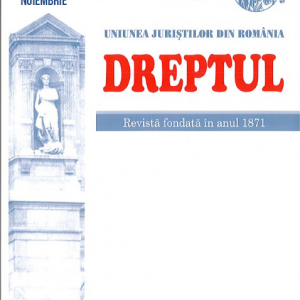 The new Romanian Criminal Code’s lawmaker took most of the regulations from the Criminal Code in force, the so-called constants of criminal law, but also introduced new ones, unknown to our law, some of which being required by the current socio-economic conditions and others being introduced out of the lawmaker’s desire to bring something new to the criminal law in force or simply to take them from other foreign laws, although criminal law science did not call for this. In this study, the authors make an inventory of these innovations, while attempting to analyze thereof and show the unfittingness of their introduction or acquisition from other foreign laws.
The new Romanian Criminal Code’s lawmaker took most of the regulations from the Criminal Code in force, the so-called constants of criminal law, but also introduced new ones, unknown to our law, some of which being required by the current socio-economic conditions and others being introduced out of the lawmaker’s desire to bring something new to the criminal law in force or simply to take them from other foreign laws, although criminal law science did not call for this. In this study, the authors make an inventory of these innovations, while attempting to analyze thereof and show the unfittingness of their introduction or acquisition from other foreign laws. -
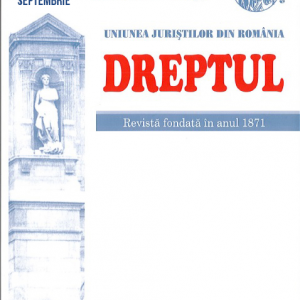 The authors of this article, starting from a case, approach the new regulation of the novation contract by changing the debtor, analyzing some legal limits of this type of contract, in the hypotheses in which, the new debtor – legal entity – takes over a debt free of charge. In this sense, highlighting the limits provided by the Constitution, the Civil Code, the Law on companies No 31/1990 1 , Criminal Code, Law on the procedures for preventing insolvency and for insolvency No 85/2014 2 , conclude that the novation contract by changing the debtor and taking over free of charge the debt of the old debtor by a legal entity third party is prohibited by several mandatory provisions of the Civil Code, the Law on companies No 31/1990, the Criminal Code and the Law on the procedures for preventing insolvency and for insolvency 85/2014. To admit otherwise means to accept the enrichment of the old debtor without just cause, to favour the administrators of the old debtor to evade the responsibility for being brought into insolvency or state of default, as well as the prejudice of the new debtor’s associates, his creditors, etc.
The authors of this article, starting from a case, approach the new regulation of the novation contract by changing the debtor, analyzing some legal limits of this type of contract, in the hypotheses in which, the new debtor – legal entity – takes over a debt free of charge. In this sense, highlighting the limits provided by the Constitution, the Civil Code, the Law on companies No 31/1990 1 , Criminal Code, Law on the procedures for preventing insolvency and for insolvency No 85/2014 2 , conclude that the novation contract by changing the debtor and taking over free of charge the debt of the old debtor by a legal entity third party is prohibited by several mandatory provisions of the Civil Code, the Law on companies No 31/1990, the Criminal Code and the Law on the procedures for preventing insolvency and for insolvency 85/2014. To admit otherwise means to accept the enrichment of the old debtor without just cause, to favour the administrators of the old debtor to evade the responsibility for being brought into insolvency or state of default, as well as the prejudice of the new debtor’s associates, his creditors, etc. -
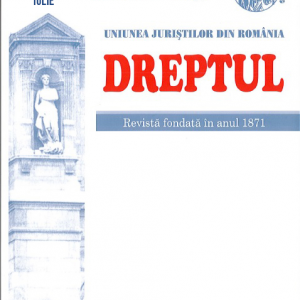 The author analyses the regulation of the legal relationship emerged from the creation of a topography of semiconductor product, both from the viewpoint of compliance with the norms of legislative technique and from the perspective of the shades of interpretation of the legal norms in the respective space. The study systematizes the issue of the moral and patrimonial rights of the limits of making use of these rights and of the specific obligations of the owners of the topographies of semiconductor products. There should be noted the multiple de lege ferenda proposals meant to eliminate the chaotic image of settling the norms and to help at establishing a legal physiognomy that should induce rigour and balance in the field of the legal relationship emerged from the registration of the topographies of the semiconductor products.
The author analyses the regulation of the legal relationship emerged from the creation of a topography of semiconductor product, both from the viewpoint of compliance with the norms of legislative technique and from the perspective of the shades of interpretation of the legal norms in the respective space. The study systematizes the issue of the moral and patrimonial rights of the limits of making use of these rights and of the specific obligations of the owners of the topographies of semiconductor products. There should be noted the multiple de lege ferenda proposals meant to eliminate the chaotic image of settling the norms and to help at establishing a legal physiognomy that should induce rigour and balance in the field of the legal relationship emerged from the registration of the topographies of the semiconductor products. -
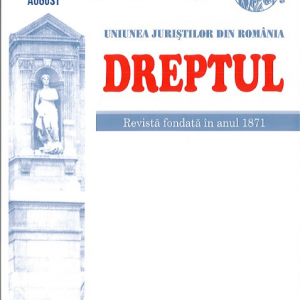 The paper examines the trust, a newly regulated institution in the content of the Romanian Civil Code (Law no. 287/2009) into force from 10 October 2011. The author formulates any critical remarks about the way in which the legislator defined the trust agreement, makes a comparison between the trust and the other similar legal institutions and highlights the specific elements of the parties and the content of the trust agreement. A special place shall be granted to the analysis of the fiduciary capacity, of the liability, of its obligations and relationships with the other persons, as well as to the analysis of the ways in which the trust agreement shall be terminated. The author formulates numerous de lege ferenda proposals as well, intended to align the legal rules in the matter with the objective legal reality.
The paper examines the trust, a newly regulated institution in the content of the Romanian Civil Code (Law no. 287/2009) into force from 10 October 2011. The author formulates any critical remarks about the way in which the legislator defined the trust agreement, makes a comparison between the trust and the other similar legal institutions and highlights the specific elements of the parties and the content of the trust agreement. A special place shall be granted to the analysis of the fiduciary capacity, of the liability, of its obligations and relationships with the other persons, as well as to the analysis of the ways in which the trust agreement shall be terminated. The author formulates numerous de lege ferenda proposals as well, intended to align the legal rules in the matter with the objective legal reality. -
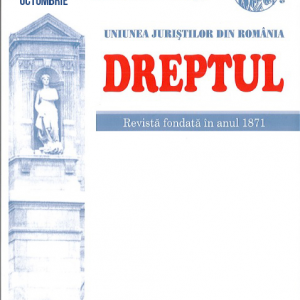 The author examines the offense of child maltreatment in relation to the offense history and in terms of the new Criminal Code. Also, de lege ferenda, the author suggests that the offense analyzed should be provided for in the chapter on offenses against the family of the new Criminal Code; this solution was also adopted by the Criminal Code in force.
The author examines the offense of child maltreatment in relation to the offense history and in terms of the new Criminal Code. Also, de lege ferenda, the author suggests that the offense analyzed should be provided for in the chapter on offenses against the family of the new Criminal Code; this solution was also adopted by the Criminal Code in force. -
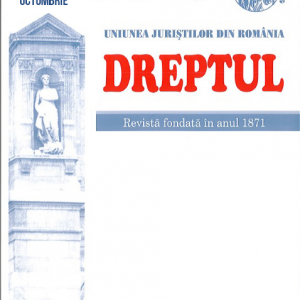 Within this paper it is examined the institution of recognition and enforcement of pecuniary sanctions by a competent authority of another Member State of the European Union, regarded as a form of judicial assistance in criminal matters at the level of the Member States. The study is a continuation of the research on the institution of judicial assistance, materialized in the author’s publication of other materials in the specialized reviews and in the volumes of some international conferences. The study can be useful both to practitioners in this field and to the students of faculties of law. The element of novelty is the examination of the institution in the light of the new amendments brought to the Romanian and European legislation, as well as by critical remarks expressed, remarks meant to help improve the phrasing of incidental legal rules.
Within this paper it is examined the institution of recognition and enforcement of pecuniary sanctions by a competent authority of another Member State of the European Union, regarded as a form of judicial assistance in criminal matters at the level of the Member States. The study is a continuation of the research on the institution of judicial assistance, materialized in the author’s publication of other materials in the specialized reviews and in the volumes of some international conferences. The study can be useful both to practitioners in this field and to the students of faculties of law. The element of novelty is the examination of the institution in the light of the new amendments brought to the Romanian and European legislation, as well as by critical remarks expressed, remarks meant to help improve the phrasing of incidental legal rules. -
 Prior to the referral to the court by filing an application for summons, in cases where the law expressly provides it, the applicant must go through a preliminary procedure, which has the meaning of an attempt of extrajudicial resolution of the legal disagreement. The current regulation in this matter (Article 193 of the Civil Procedure Code) is significantly superior to the previous one. The interpretation and the application of these provisions require some specifications or nuances, which are subject to this study.
Prior to the referral to the court by filing an application for summons, in cases where the law expressly provides it, the applicant must go through a preliminary procedure, which has the meaning of an attempt of extrajudicial resolution of the legal disagreement. The current regulation in this matter (Article 193 of the Civil Procedure Code) is significantly superior to the previous one. The interpretation and the application of these provisions require some specifications or nuances, which are subject to this study. -
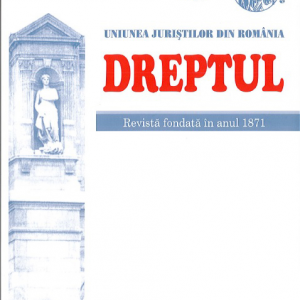 In this article, we intend to present, first of all, the particularities of the on-the-spot investigation, and then to deal with the way of drawing up a report, regarding those found on the spot and the importance of such evidence for solving cases. Also, depending on the discussions held, in our presentation, we will examine the themes raised by applying Articles 345–347 of the Civil Procedure Code; the situations in which the court, which travels on the spot, cannot conclude the investigation on the appointed day; the issue of the rogatory commission and the manner of drawing up the minutes. Current probation law provides the on-the-spot investigation with the conduct of operations and findings to be recorded in a report, which also shows the presence or absence of the parties. We appreciate that, for a fair trial, the deadlines for which the judge goes to that place on the second or even the third day must be mentioned. Although it is not a legal provision for the on-the-spot investigation by the letter rogatory, there are requests, according to the rules of common law, by which the courts support each other, to establish the truth accurately. Because the on-the-spot investigation is direct evidence of the facts, the minutes must be drawn up meticulously during on-the-spot investigations. In our analysis we also turn to generically related information, which cannot be a means of probation allowed by our system.
In this article, we intend to present, first of all, the particularities of the on-the-spot investigation, and then to deal with the way of drawing up a report, regarding those found on the spot and the importance of such evidence for solving cases. Also, depending on the discussions held, in our presentation, we will examine the themes raised by applying Articles 345–347 of the Civil Procedure Code; the situations in which the court, which travels on the spot, cannot conclude the investigation on the appointed day; the issue of the rogatory commission and the manner of drawing up the minutes. Current probation law provides the on-the-spot investigation with the conduct of operations and findings to be recorded in a report, which also shows the presence or absence of the parties. We appreciate that, for a fair trial, the deadlines for which the judge goes to that place on the second or even the third day must be mentioned. Although it is not a legal provision for the on-the-spot investigation by the letter rogatory, there are requests, according to the rules of common law, by which the courts support each other, to establish the truth accurately. Because the on-the-spot investigation is direct evidence of the facts, the minutes must be drawn up meticulously during on-the-spot investigations. In our analysis we also turn to generically related information, which cannot be a means of probation allowed by our system. -
 Protecția drepturilor omului1 , în esența sa, a fost la început o afacere internă a statelor și era asigurată într-un cadru național. Treptat, ea și-a făcut loc și în dreptul internațional, care a început să se intereseze de drepturile persoanelor în prima jumătate a veacului trecut, urmare a unor evenimente, cum ar fi revoluția rusă, genocidul asupra poporului armean, ascensiunea la putere a partidului nazist în Germania, ce au determinat mișcări forțate de populație. Era în firescul lucrurilor ca primele instrumente internaționale de protecție a persoanelor să se refere cu precădere la drepturile refugiaților și la drepturile minorităților. În legătură cu drepturile refugiaților, cu titlu de exemplu, relevăm: Aranjamentul privind eliberarea de certificate de identitate refugiaților ruși și armeni din 12 mai 1926; Aranjamentul relativ la statutul juridic al refugiaților ruși și armeni din 30 iunie 1928; Convenția asupra statutului internațional al refugiaților din 28 octombrie 1933; Convenția privind statutul refugiaților provenind din Germania. Cu referire la drepturile minorităților, amintim: tratatele speciale – (de)numite despre minorități – care au fost încheiate în urma Primului Război Mondial cu Polonia, Cehoslovacia, Statul Sârbo-Croato-Sloven, România și Grecia. Pe de altă parte, dispoziții în favoarea minorităților au fost inserate și în tratatele de pace încheiate cu Austria, Bulgaria, Ungaria și Turcia.
Protecția drepturilor omului1 , în esența sa, a fost la început o afacere internă a statelor și era asigurată într-un cadru național. Treptat, ea și-a făcut loc și în dreptul internațional, care a început să se intereseze de drepturile persoanelor în prima jumătate a veacului trecut, urmare a unor evenimente, cum ar fi revoluția rusă, genocidul asupra poporului armean, ascensiunea la putere a partidului nazist în Germania, ce au determinat mișcări forțate de populație. Era în firescul lucrurilor ca primele instrumente internaționale de protecție a persoanelor să se refere cu precădere la drepturile refugiaților și la drepturile minorităților. În legătură cu drepturile refugiaților, cu titlu de exemplu, relevăm: Aranjamentul privind eliberarea de certificate de identitate refugiaților ruși și armeni din 12 mai 1926; Aranjamentul relativ la statutul juridic al refugiaților ruși și armeni din 30 iunie 1928; Convenția asupra statutului internațional al refugiaților din 28 octombrie 1933; Convenția privind statutul refugiaților provenind din Germania. Cu referire la drepturile minorităților, amintim: tratatele speciale – (de)numite despre minorități – care au fost încheiate în urma Primului Război Mondial cu Polonia, Cehoslovacia, Statul Sârbo-Croato-Sloven, România și Grecia. Pe de altă parte, dispoziții în favoarea minorităților au fost inserate și în tratatele de pace încheiate cu Austria, Bulgaria, Ungaria și Turcia. -
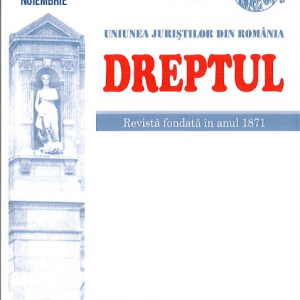 Taking into consideration that this is a matter in which there are serious controversies in the doctrine and multiple contradictory solutions in the legal practice, this feature (unity or plurality of passive subjects) should not be mentioned as a constitutive feature of the continued crime, thus suggesting the idea that the solution had the adhesion of the entire doctrine. In this respect, the solution of the criminal law in force, which defines continued crime without adding the mentioned feature, seems fairer to us than the solution provided by the new Criminal Code.
Taking into consideration that this is a matter in which there are serious controversies in the doctrine and multiple contradictory solutions in the legal practice, this feature (unity or plurality of passive subjects) should not be mentioned as a constitutive feature of the continued crime, thus suggesting the idea that the solution had the adhesion of the entire doctrine. In this respect, the solution of the criminal law in force, which defines continued crime without adding the mentioned feature, seems fairer to us than the solution provided by the new Criminal Code. -
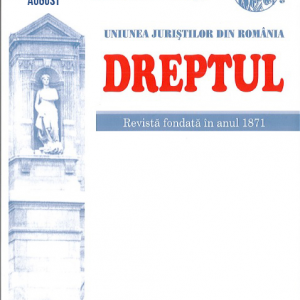 The author, undertaking an analysis of legal EU regulations in relation to occupational pensions, concludes that the statements under Ruling no. 873/2010 of the Constitutional Court of Romania (only in terms of constitutionality of Law no. 119/2010 with reference to the conversion of public military pensions in “common law” pensions, within the meaning of Law no. 19/2000) are erroneous; consequently, the aforementioned conversion itself, set forth under Law no. 119/ 2010, is unconstitutional, in breaching relevant European law.
The author, undertaking an analysis of legal EU regulations in relation to occupational pensions, concludes that the statements under Ruling no. 873/2010 of the Constitutional Court of Romania (only in terms of constitutionality of Law no. 119/2010 with reference to the conversion of public military pensions in “common law” pensions, within the meaning of Law no. 19/2000) are erroneous; consequently, the aforementioned conversion itself, set forth under Law no. 119/ 2010, is unconstitutional, in breaching relevant European law. -
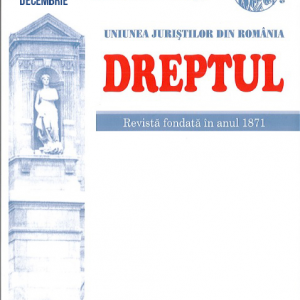 On the occasion of the modification of the claims regarding the establishment of a seizure, the judge of the cause of action should examine to what extent, from the psychological and legal point of view, the active involvement of the creditor – most often the single litigant who knows the existence of the file – prejudices certain fundamental principles of the civil trial such as the principle of the equality of arms or the principle of contradictoriality. The simple record of the presence of the party, in the absence of the other party, is sufficient to affect, by itself, these cardinal ordinances of the civil trial. The principle of availability cannot justify a proportional reduction in the amount of the bail in relation to the reduction of the sum to the amount to which the establishment of the seizure is required; otherwise, it would create an insurmountable “obstacle” in the path of the debtor which, “exposing” the abusive approach of the creditor subsequently, would be obliged to have its fill of an inappropriate bail of the suffered prejudice.
On the occasion of the modification of the claims regarding the establishment of a seizure, the judge of the cause of action should examine to what extent, from the psychological and legal point of view, the active involvement of the creditor – most often the single litigant who knows the existence of the file – prejudices certain fundamental principles of the civil trial such as the principle of the equality of arms or the principle of contradictoriality. The simple record of the presence of the party, in the absence of the other party, is sufficient to affect, by itself, these cardinal ordinances of the civil trial. The principle of availability cannot justify a proportional reduction in the amount of the bail in relation to the reduction of the sum to the amount to which the establishment of the seizure is required; otherwise, it would create an insurmountable “obstacle” in the path of the debtor which, “exposing” the abusive approach of the creditor subsequently, would be obliged to have its fill of an inappropriate bail of the suffered prejudice. -
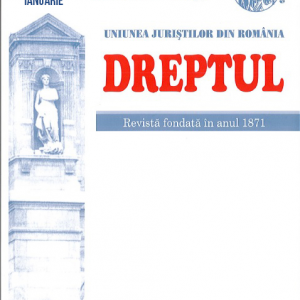 In this study, the two authors examine the procedure of establishing local councils in the Romanian legislation and reveal a series of ambiguities of the legal rules regulating various stages of this procedure, ambiguities generated in particular by the circumstance that the given procedure is regulated in the content of three regulations, namely: art. 28–35 of the Local Public Administration Law no. 215/2001 (republished in 2007, then amended and supplemented several times), art. 1–10 of the Government Ordinance no. 35/2002 for approving the Regulation on the organization and operation of local councils; art. 6–8 of Law no. 393/2004 on the statute of local elected officials (and the latest two regulations being amended and completed several times). Taking into consideration this situation, the authors propose a series of solutions for creating a more coherent legislative framework in this field.
In this study, the two authors examine the procedure of establishing local councils in the Romanian legislation and reveal a series of ambiguities of the legal rules regulating various stages of this procedure, ambiguities generated in particular by the circumstance that the given procedure is regulated in the content of three regulations, namely: art. 28–35 of the Local Public Administration Law no. 215/2001 (republished in 2007, then amended and supplemented several times), art. 1–10 of the Government Ordinance no. 35/2002 for approving the Regulation on the organization and operation of local councils; art. 6–8 of Law no. 393/2004 on the statute of local elected officials (and the latest two regulations being amended and completed several times). Taking into consideration this situation, the authors propose a series of solutions for creating a more coherent legislative framework in this field. -
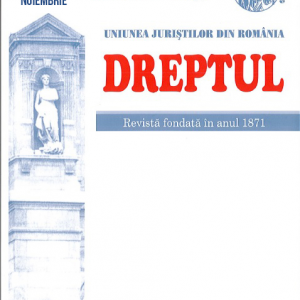 Considerații generale. În art. 146 din Constituția României, republicată, legiuitorul constituant a prevăzut atribuțiile Curții Constituționale, procedura jurisdicțională fiind menționată în cadrul secțiunii a 2-a din capitolul III, denumit „Competența Curții Constituționale”, din Legea nr. 47/1992 privind organizarea și funcționarea Curții Constituționale, republicată1. Potrivit dispozițiilor textului menționat, una din atribuțiile Curții Constituționale este aceea de a hotărî „asupra excepțiilor de neconstituționalitate privind legile și ordonanțele, ridicate în fața instanțelor judecătorești sau de arbitraj comercial; excepția de neconstituționalitate poate fi ridicată și direct de Avocatul Poporului” [art. 146 lit. d) din Constituția României, republicată].
Considerații generale. În art. 146 din Constituția României, republicată, legiuitorul constituant a prevăzut atribuțiile Curții Constituționale, procedura jurisdicțională fiind menționată în cadrul secțiunii a 2-a din capitolul III, denumit „Competența Curții Constituționale”, din Legea nr. 47/1992 privind organizarea și funcționarea Curții Constituționale, republicată1. Potrivit dispozițiilor textului menționat, una din atribuțiile Curții Constituționale este aceea de a hotărî „asupra excepțiilor de neconstituționalitate privind legile și ordonanțele, ridicate în fața instanțelor judecătorești sau de arbitraj comercial; excepția de neconstituționalitate poate fi ridicată și direct de Avocatul Poporului” [art. 146 lit. d) din Constituția României, republicată]. -
 In this study, the author – by making a comparative analysis of the legal treatment of the spouses’ common assets obtained in the course of marriage in the new Romanian Civil Code (Law No. 287/2009, as amended by Law No. 71/ 2011 and in force as of October 1, 2011) – issues a series of own interpretations in the field, including with regard to the spouses’ tacit mandate within the legal joint property of assets according to the regulations of the Romanian Civil Code, also underlining a series of negative aspects (with regard to common assets) contained in the regulations of the new Code.
In this study, the author – by making a comparative analysis of the legal treatment of the spouses’ common assets obtained in the course of marriage in the new Romanian Civil Code (Law No. 287/2009, as amended by Law No. 71/ 2011 and in force as of October 1, 2011) – issues a series of own interpretations in the field, including with regard to the spouses’ tacit mandate within the legal joint property of assets according to the regulations of the Romanian Civil Code, also underlining a series of negative aspects (with regard to common assets) contained in the regulations of the new Code. -
 This study presents the divergent case law generated by the current insufficient regulation of the legal regime of burial plots and funeral constructions, such as burial vaults and crypts. While some courts admit the assignment of the tomb to one heir, others consider that the concession right over the burial plot and the funeral constructions bears upon a forced and perpetual indivisibility which excludes the division. As a solution, it proposes a clarification of the legal regime applicable to funeral concessions and the explicit regulation of the use of underground burial vaults, especially from the perspective of the exclusive right to be buried in a particular crypt.
This study presents the divergent case law generated by the current insufficient regulation of the legal regime of burial plots and funeral constructions, such as burial vaults and crypts. While some courts admit the assignment of the tomb to one heir, others consider that the concession right over the burial plot and the funeral constructions bears upon a forced and perpetual indivisibility which excludes the division. As a solution, it proposes a clarification of the legal regime applicable to funeral concessions and the explicit regulation of the use of underground burial vaults, especially from the perspective of the exclusive right to be buried in a particular crypt. -
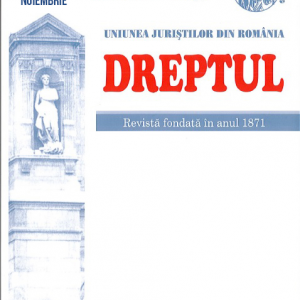 This study aims to develop concepts already outlined in the doctrine, but in the light of the modern law on self-defence and exceeding its limits, containing transitional issues in relation to the new Criminal Code, accompanied by the case law up to date and reasonable own notes, while emphasizing the theoretical and practical controversies encountered. The article is prepared in an analytical style, the author reveals the key aspects regarding certain particularities and difficulties arising from the combination of the letter of the law with its enforcement. In addition to the aforementioned aspects, certain elements related to the comparative law are present, and the provisions of the (European) Convention for the Protection of Human Rights and Fundamental Freedoms concerning self-defence, as well as de lege ferenda proposals.
This study aims to develop concepts already outlined in the doctrine, but in the light of the modern law on self-defence and exceeding its limits, containing transitional issues in relation to the new Criminal Code, accompanied by the case law up to date and reasonable own notes, while emphasizing the theoretical and practical controversies encountered. The article is prepared in an analytical style, the author reveals the key aspects regarding certain particularities and difficulties arising from the combination of the letter of the law with its enforcement. In addition to the aforementioned aspects, certain elements related to the comparative law are present, and the provisions of the (European) Convention for the Protection of Human Rights and Fundamental Freedoms concerning self-defence, as well as de lege ferenda proposals. -
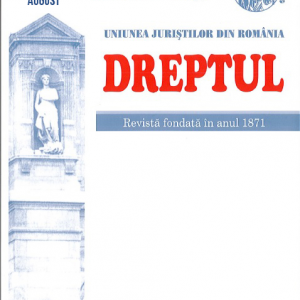 It is of interest both from theoretical perspective and mostly from practical perspective to raise for discussion and, furthermore, to propose some solutions for some controversial issues related to succession law, as well as to settle a conflict of laws in time. Therefore, in this paper there are emphasized some of the facets which the temporal conflict of laws can take, in the matter of inheritances, and there are expressed some points of view, which could be of interest to the practitioners, determining them to reflect on this topic.
It is of interest both from theoretical perspective and mostly from practical perspective to raise for discussion and, furthermore, to propose some solutions for some controversial issues related to succession law, as well as to settle a conflict of laws in time. Therefore, in this paper there are emphasized some of the facets which the temporal conflict of laws can take, in the matter of inheritances, and there are expressed some points of view, which could be of interest to the practitioners, determining them to reflect on this topic. -
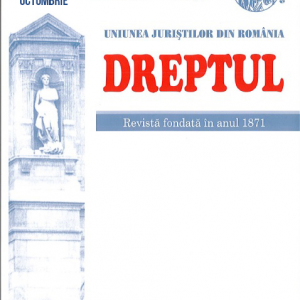 After examining the criminal rules contained in the Government Emergency Ordinance no. 202/2002, the authors formulate several proposals de lege ferenda regarding the crimes regulated by this piece of legislation.
After examining the criminal rules contained in the Government Emergency Ordinance no. 202/2002, the authors formulate several proposals de lege ferenda regarding the crimes regulated by this piece of legislation. -
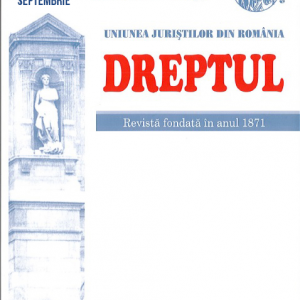 In this study, the author makes a thorough analysis of the so-called tax havens, outlining their connection with organized crime. Thus, the definition and main characteristics of tax havens, the types of tax havens and certain measures adopted at EU level to limit thereof are portrayed herein.
In this study, the author makes a thorough analysis of the so-called tax havens, outlining their connection with organized crime. Thus, the definition and main characteristics of tax havens, the types of tax havens and certain measures adopted at EU level to limit thereof are portrayed herein. -
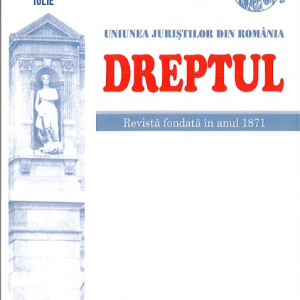 According to the new criminal regulation, the offence of misleading the judicial bodies preserves some elements of the offence of false accusation, which is currently not provided anymore, but both the constitutive content and the sanctioning system show serious changes.
According to the new criminal regulation, the offence of misleading the judicial bodies preserves some elements of the offence of false accusation, which is currently not provided anymore, but both the constitutive content and the sanctioning system show serious changes. -
 Starting from the provisions of art. 51 of the Constitution of Romania (regulating the right to petition), of the Government Ordinance no. 27/2002 (ordering the public authorities and institutions to solve the petitions of citizens within 30 days after the date of their registration), corroborated with a series of provisions of Law no. 554/2004 on administrative claims, also taking into consideration the case law in the matter, the authors examine in detail the regulations in this field and, in the end, correlating all these facts, they tend to draw conclusions in the field examined.
Starting from the provisions of art. 51 of the Constitution of Romania (regulating the right to petition), of the Government Ordinance no. 27/2002 (ordering the public authorities and institutions to solve the petitions of citizens within 30 days after the date of their registration), corroborated with a series of provisions of Law no. 554/2004 on administrative claims, also taking into consideration the case law in the matter, the authors examine in detail the regulations in this field and, in the end, correlating all these facts, they tend to draw conclusions in the field examined. -
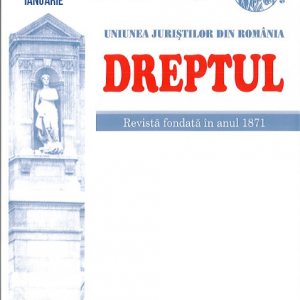 The article includes some considerations regarding the procedural dispositions concerning the purpose of criminal lawsuit, as regulated in the Code of Criminal Procedure. The author analyzes the dispositions of the new Code of Criminal Procedure which establishes the purpose of the rules of criminal procedure, by reference to the dispositions of the Code of Criminal Procedure in force where the purpose of criminal lawsuit is established.
The article includes some considerations regarding the procedural dispositions concerning the purpose of criminal lawsuit, as regulated in the Code of Criminal Procedure. The author analyzes the dispositions of the new Code of Criminal Procedure which establishes the purpose of the rules of criminal procedure, by reference to the dispositions of the Code of Criminal Procedure in force where the purpose of criminal lawsuit is established. -
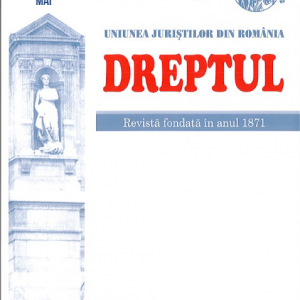 In this article, the author examines the crime of treason by giving aid to the enemy both in terms of the current Criminal Code and in light of the new Criminal Code, pointing out, where appropriate, the main similarities and differences between the two regulations.
In this article, the author examines the crime of treason by giving aid to the enemy both in terms of the current Criminal Code and in light of the new Criminal Code, pointing out, where appropriate, the main similarities and differences between the two regulations.
